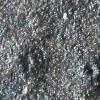
09-12-2025 12:06
 Andgelo Mombert
Andgelo Mombert
Bonjour,Je recherche l'article concernant Hypobryo

07-12-2025 16:07
Arnold BüschlenHallo, ich habe in einer Moos-Aufsammlung (epiphy

08-12-2025 21:04
Mark Stevens"Hello everyone,I'm relatively new to microscopy (

08-12-2025 18:59
 Lothar Krieglsteiner
Lothar Krieglsteiner
.. found by a seminar-participant, I do not know t

08-12-2025 17:37
 Lothar Krieglsteiner
Lothar Krieglsteiner
20.6.25, on branch of Abies infected and thickened

16-03-2014 22:00
Hello,I found this species a few months ago but ha

08-12-2025 13:39
Thomas Læssøehttps://svampe.databasen.org/observations/10572899
Biscognauxia? from Australia
Hans-Otto Baral,
06-09-2007 22:34
 Bon jour
Bon jouron a branch of a broad-leaved, Ficus-like tree in NE-Australia grew in association with Orbilia aff. vinosa a quite banal looking Xylariales resembling a Biscognauxia. The spores seem, however, unusual in their one end being distinctly truncate. Has anybody an idea what genus and perhaps species this is?
data: Sp. 9.5-12.5 x (5.3-)5.7-6 µm. Stroma 7-23 x 5-12 mm, 0.8 mm thick. HB 8609b.
Zotto
Jacques Fournier,
20-09-2007 09:06

Re:Biscognauxia? from Australia
Hi Zotto,
sorry for the delay, I was off when you sent your message.
I agree it is likely a Biscogniauxia. In this genus several species have two-celled ascospores, a big brown one, bearing a germ slit, and a small hyaline one which usually collapses with time and leaves a truncate end. This can be seen in Xylaria, Anthostomella and Nemania too. One of the ascospores on your photo still has its dwarf cell, quarter SE
Your taxon would need further data to be safely identified. If the stroma does have punctate ostioles surrounded by a low rim and if ascospores have a long germ slit, it might be B. uniapiculata (Penz. & Sacc.) Whalley & Laessoe, a common pantropical species.
All my best,
Jacques
sorry for the delay, I was off when you sent your message.
I agree it is likely a Biscogniauxia. In this genus several species have two-celled ascospores, a big brown one, bearing a germ slit, and a small hyaline one which usually collapses with time and leaves a truncate end. This can be seen in Xylaria, Anthostomella and Nemania too. One of the ascospores on your photo still has its dwarf cell, quarter SE
Your taxon would need further data to be safely identified. If the stroma does have punctate ostioles surrounded by a low rim and if ascospores have a long germ slit, it might be B. uniapiculata (Penz. & Sacc.) Whalley & Laessoe, a common pantropical species.
All my best,
Jacques
Hans-Otto Baral,
20-09-2007 16:42

Re:Biscognauxia? from Australia
Hi Jacques
tnaks a lot, that helps. Yes, the spores have a long germ slit, visible at the lower right spore on my photo, here again. Now I believe the spores are originally 2-celled. The ostioles are simple minute craters, please see photo.
Zotto
tnaks a lot, that helps. Yes, the spores have a long germ slit, visible at the lower right spore on my photo, here again. Now I believe the spores are originally 2-celled. The ostioles are simple minute craters, please see photo.
Zotto

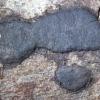
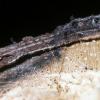
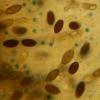
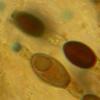
 3127.gif
3127.gif